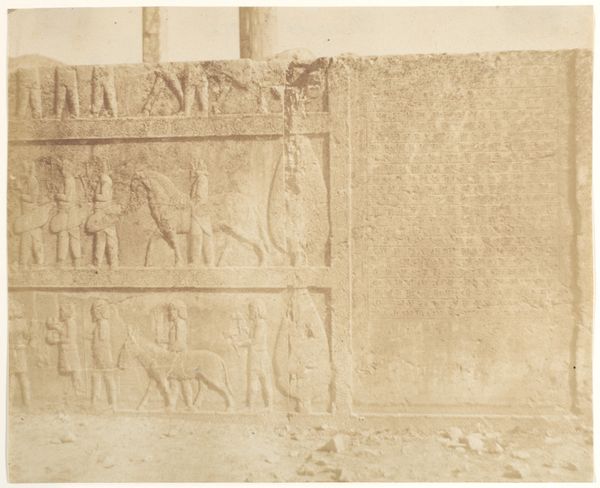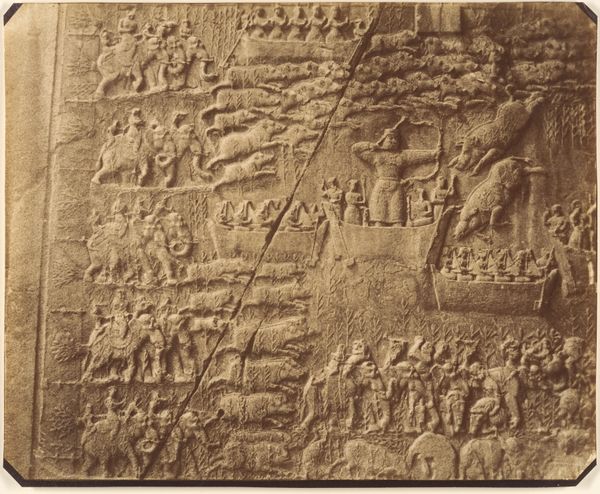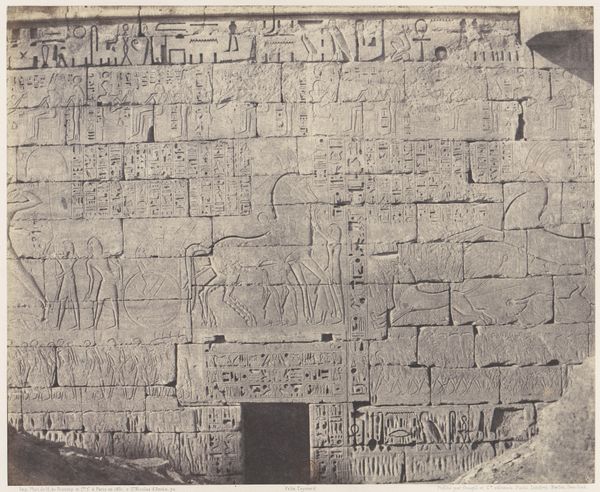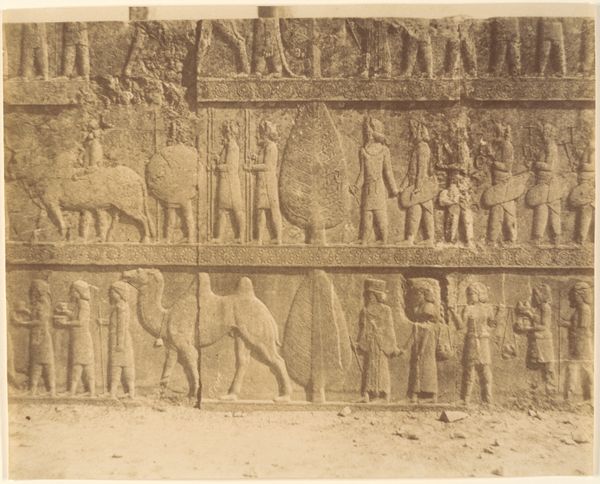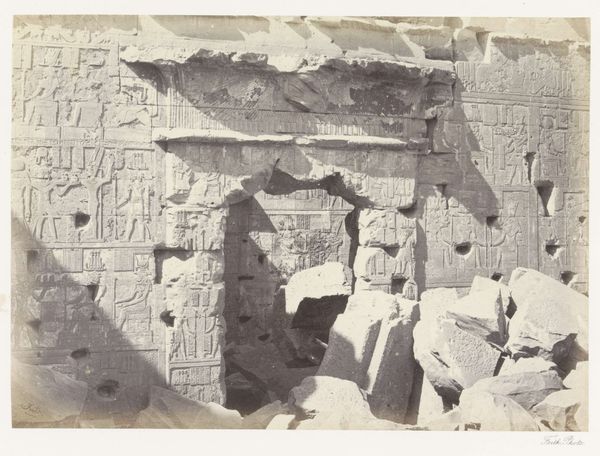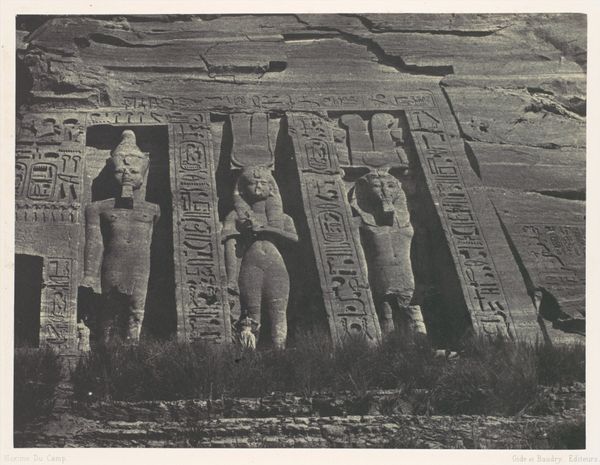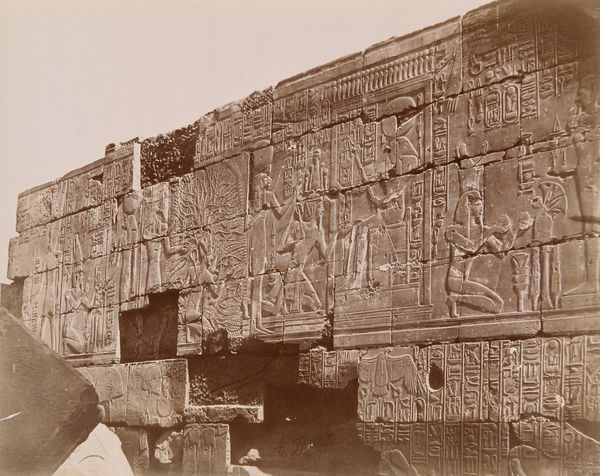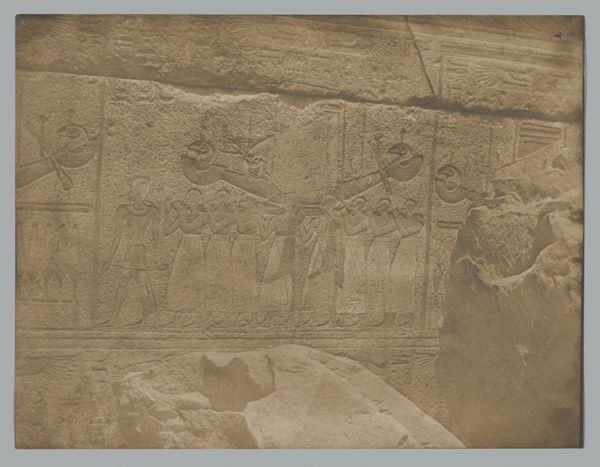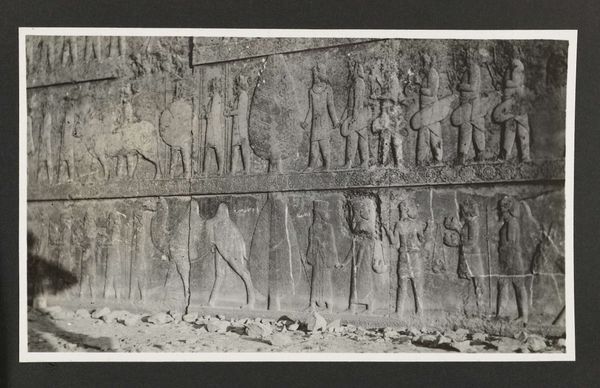
etching, relief, photography
#
etching
#
relief
#
ancient-egyptian-art
#
photography
#
ancient-mediterranean
#
history-painting
Dimensions: sheet (trimmed to image): 23.3 x 29.9 cm (9 3/16 x 11 3/4 in.) support: 47.4 x 61.9 cm (18 11/16 x 24 3/8 in.)
Copyright: National Gallery of Art: CC0 1.0
Editor: So, this is John Beasley Greene's photograph, "Edfu-Sculptures and Inscriptions on Oriental Face" from 1854. It seems like he captured a section of a temple wall. I'm struck by how much information is packed into one frame. What do you see in this image, beyond just documentation? Curator: What strikes me is how this photograph embodies a complex power dynamic. It presents us with ancient Egyptian relief carvings—art created by a civilization that held immense power and deeply shaped religious and social structures, side-by-side with early photographic techniques. We are viewing their art through a 19th-century, Western lens. What do you make of that? Editor: I hadn't thought about that. It’s easy to just see the carvings themselves, the content, without thinking about who is framing that content and why. Is Greene perhaps asserting a kind of control by documenting and, in effect, "capturing" these images? Curator: Precisely! This photograph serves as a visual claim, connecting European expansion with a perceived right to interpret and represent cultures outside its borders. By photographing these reliefs, Greene contributes to a historical narrative that situates Egyptian art within a colonial framework. Think about the accessibility, too: only certain people, undoubtedly Western elites, had the ability to view these photos. How does that shape the understanding of this artwork? Editor: So, beyond being an image of an Egyptian wall, it becomes an artifact that reveals a lot about 19th-century European attitudes toward other cultures. It’s about layers of power, representation, and accessibility. I guess I was initially looking at the image too literally. Curator: It's a photograph, but it also presents us with the biases inherent in historical interpretation, allowing us to critically examine how we understand the past through visual media. Editor: That’s given me a lot to consider. Thanks for helping me see the image from a totally different, more critical perspective!
Comments
No comments
Be the first to comment and join the conversation on the ultimate creative platform.
